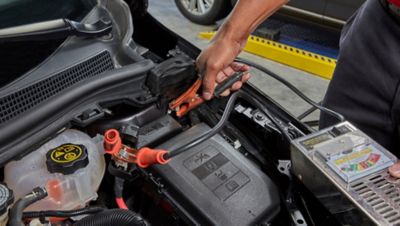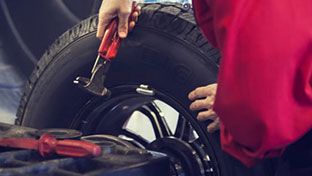If you've ever seen the term rolling resistance used as a selling point when shopping for tires and wondered what it is and why it matters, we have some answers.

What it is:
Tire rolling resistance is the amount of energy needed to keep your tires rolling at a straight and steady pace, and it can have a big impact on your car's fuel efficiency.
If you're a city driver, tire rolling resistance accounts for about 15% of your car's overall resistance (25% on highway where there's less stop and go). When you hear overall resistance, it means anything and everything that inhibits forward momentum, including your car's aerodynamics. Buying low-rolling resistance tires can help save you a lot of time, and money, at the pump over time.
How it works:
Rolling resistance is caused by tires' interaction with the road. Tires are always bending and stretching as they travel under the weight of your car, your passengers and any cargo you're carrying, all of which adds up to a lot of friction between your tires and the road.
Tires with low-rolling resistance have thinner sidewalls, shallower tread patterns and a special rubber compound that makes them lighter and coast farther using momentum instead of pedal power.
How we know:
The California Energy Commission did a study on light truck fleets and the impact in MPGs of low-rolling resistance tires. Results showed that if all light truck tires in California were switched to low-rolling resistance tires, the energy savings could be enormous – about 300 million gallons of gasoline per year, or roughly $1 billion.
Things to remember:
- Low-rolling resistance tires are firmer and tend to be louder and ride rougher than flexible tires with more give.
- New tires generate more rolling resistance than worn tires simply because they have more tread, which means more grip and more resistance. Because rolling resistance drops over time – about 20% overall throughout a tire's lifetime – your miles per gallon will fluctuate as your tires age.
- Even if tires are listed as the same size, their specs may vary slightly by manufacturer and tire line (up to 2/10”). This is important because it means one tire may make less revolutions than another tire in the same size category traveling at the same speed and distance, and less revolutions mean fewer miles per gallon.
The Bottom Line:
Many things affect your car's fuel consumption, but low-rolling resistance tires can help you get more bang for your buck at the pump.
Not ready to make a purchase right now? No problem. You can improve your car's fuel economy by keeping all of your tires – no matter the type – properly inflated. According to the U.S. Department of Energy, if a tire with a recommended pressure of 35 psi drops just 8 psi, it will experience a whopping rolling resistance increase of 12.5 percent.
Look for a decal in your glove box or driver's side doorjamb to see your manufacturer's recommended tire pressure.

